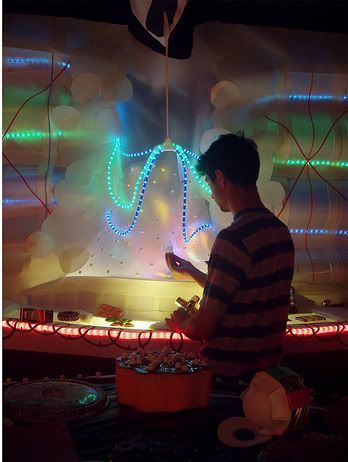
JESSE GREENBERG

For the past 4 years, Jesse Greenberg has been making interactive environmental installations called “MEGA BINX”. These interiors are constructed out of flashing lights, synthetic furniture, plastic “touchables”, and sculptural objects of all sizes and materials. Jesse Greenberg is a prolific producer of enigmatic objects that stand somewhere between contemporary art and science fiction.
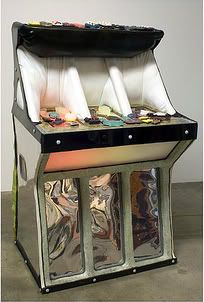
THE FREE STORE: I remember hearing a story about how you never made art before applying for art school.
JESSE GREENBERG: Well, that’s not entirely true. In high school and before that I never really had any idea of what kind of art was good or worthy to be considered “art”. Basically the only kind of art that I was making was from art class: rendering, stuff like that. I honestly didn’t care to do it. I knew I wanted to do art, and that I wanted to be an artist but I didn’t have any idea what I wanted that to be.
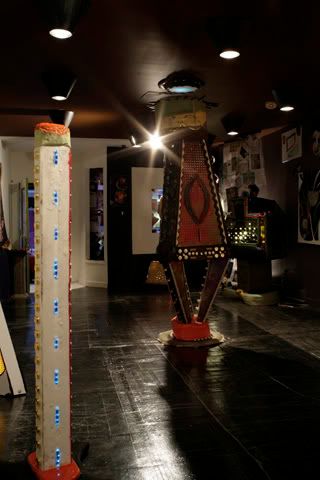
THE FREE STORE: Despite your formal art education, your work has retained an outsider quality.
JESSE GREENBERG: I guess I retain this outsider art thing because it’s the only context where this work is accepted. I wouldn’t say it’s all outsider art because a lot of it has shown in contemporary art centers and galleries. I guess in my mind, the term “outsider art” means folk art. You could consider what I do to be folk art of a new era where technology is incorporated. I feel like outsider art is not particularly interested in the international art market, and I guess I am.
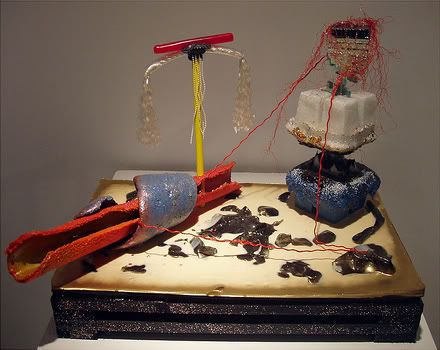
THE FREE STORE: Well, your work is pretty populistic. Do you ever imagine a larger audience than the art world? Would you make public art? Art for kids?
JESSE GREENBERG: In my lifetime, I want to do a lot of things. As many things as possible. I want my artwork to reach an international audience. Within the Megabinx series there are different levels of accessibility. I could eventually make the “Touchables” extremely cheap and available. Its funny that you say mention kids because currently my sister is trying to put together a TV show for kids called “Fun Club”. She wants me to be the art director, which I would love to do. I do know that kids react positively to my aesthetics: the overall look.
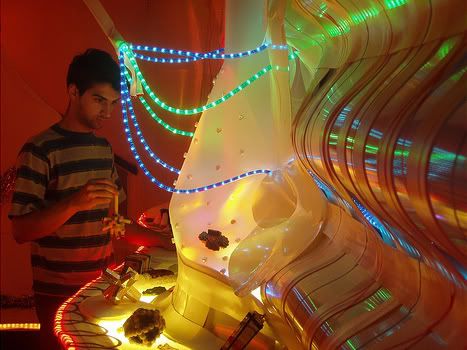
THE FREE STORE: A lot of people have trouble pinpointing your ethnicity. You could be Indian, Lebanese, Egyptian, and PalestinianÖ I find this phenomenon runs parallel to your work: There is this international exoticism that is kind of ambivalent.
JESSE GREENBERG: Within the last day 3 people have asked me what my ethnicity is. They’re curious and they just don’t know. I like that because it doesn’t place me within any kind of prejudice. In my work I like for there to be that level of obscurity and vagueness where you are almost familiar with something but you’re not quite sure and it seems like something familiar. You can’t pinpoint it. I am interested in culture, although I don’t support the keeping up of traditions and rituals. They keep humans from progressing. I do want inter-breeding to occur so that eventually we are simply one culture.
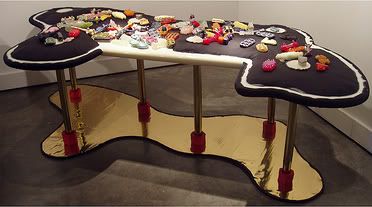
THE FREE STORE: I heard that you were spending time with a representative of the Raeleans, a group whose religion is based around the concept of intelligent design. They also believe that aliens seeded the Earth. How much do you believe this stuff?
JESSE GREENBERG: It’s entirely only for my imagination. Sometimes I end up talking to people like that who are into bizarre beliefs that they truly believe in. It’s really interesting to hear their thoughts. They always touch on ideas that make me say, “yeah I could see that”. I don’t agree with the Raelean philosophy. They believe an alien invented a DNA to create our society. Its ridiculous. It’s as ridiculous as believing in any other god. But it is cool because it goes to a lot of metaphysical and astrophysical cultural evolution ideas that are interesting to talk about. But collectively it is total nonsense.
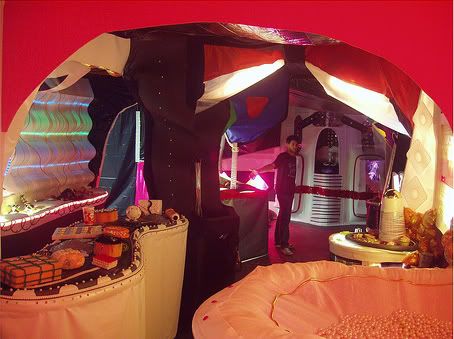
THE FREE STORE: For the last couple of years you have gotten an abundance of your materials from recycling centers.
JESSE GREENBERG: It’s interesting that I do find so much good materials for my work for free: from garbage, things I find on the street or recycling centers. I actually would like to go further with that. There is just so much garbage out there and I don’t really believe that recycling works that well. There are so many processes it has to go through to make it happen. But I do believe in re-using. Especially for items that you can’t recycle. I guess that art is a good place to go to for those kinds of things.
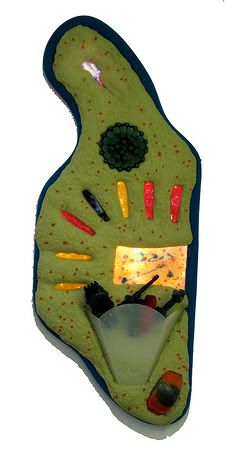
THE FREE STORE: How much do you need to alter a material before you can call it your own?
JESSE GREENBERG: Generally, I just borrow forms. Like, you know when you buy something and it comes with that plastic seal, and you pull it off? I like to use those shapes because they are similar to what you deal with everyday. They are generalized shapes. I feel like it is ok to borrow those because they are things that people don’t see. People look through them. I can use them and people never recognize where I got that shape. One really popular handheld touchable item is this almost brick size piece. It’s taken from the packaging from this stuff called “Pro-Active” acne medication. I know that it’s a popular product and I wonder if anyone see’s it when they are looking at that sculpture.
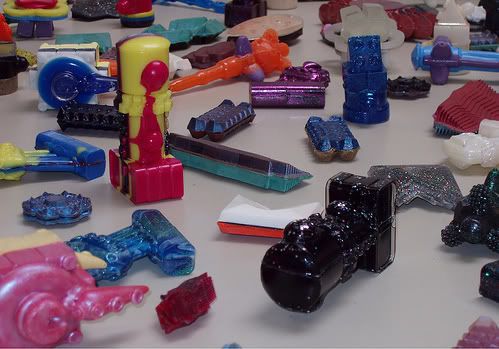
THE FREE STORE: What’s the story with the “Touchables”?
JESSE GREENBERG: Mega binx started with touchables. The first idea I had was I wanted to make some art works that you could touch and would want to touch and it was obvious you could touch it without signs telling you that you could touch it. I started using plastics because they’re tactile materials. I was first going off the idea of what feels good in one’s hand: Stress items, things you keep in your pocket that you squeeze and feel. I had never sold any until this past year. I really wanted them to be out there. I’m glad now that people own them.